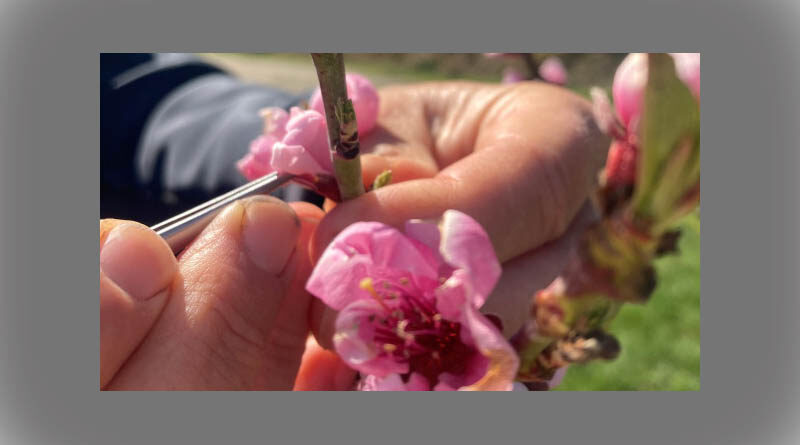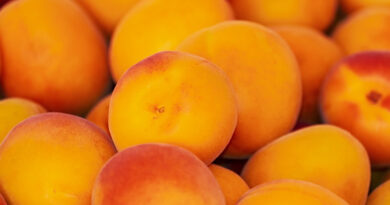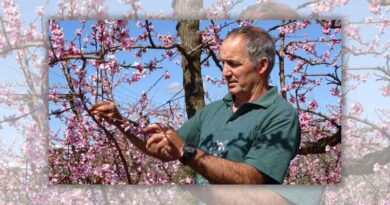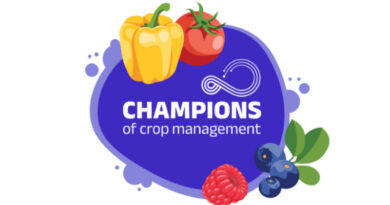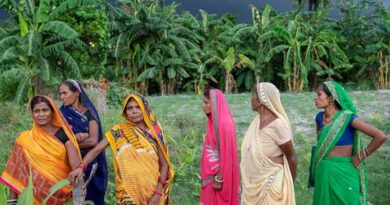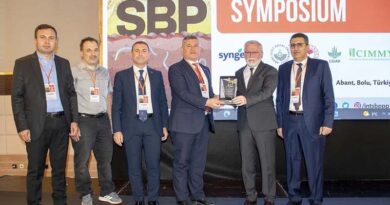Ripe for the picking: Twenty years of research culminates in three new apricot varieties
30 November 2022, NZ: After more than 20 years of research and assessing thousands of apricots, Plant & Food Research Ltd (PFR) New Zealand might have hit the jackpot, with a new suite of apricot varieties. AIMEE WILSON reports on the journey from orchard to lab.
The New Zealand apricot industry had been looking for new varieties with flavour, good texture, a good appearance and the resilience to travel to overseas markets. An encounter with a late sport of Moorpark down in the Teviot Valley was just the beginning of a long process of developing and commercialising new apricot varieties with these desired attributes.
Arlene Nixon, a Clyde-based research technologist for PFR, is passionate about combining her love of science, art and observing nature. Like anybody, she also appreciates good tasting fruit. Her background in breeding dairy cattle and bloodstock, plus a few years in the apricot lab, gave her the opportunity to work with Mike Malone in the PFR apricot breeding programme which began in 1999.
“At that time there [were] only a few apricot blocks at Clyde; a collection of early introductions into New Zealand, the Clutha series, and a disappointing block of late Trevatt cross [varieties],” Arlene says. “I saw this as a great opportunity to get stuck in and make some crosses using commercially viable parents to see if we couldn’t make some improvements to currently grown [apricot] varieties.”
Arlene was soon swept up in the process.
“Seeing the first fruit in the seedling rows is a high point in the season,” she says.
Visits to Clyde by growers, industry leaders and overseas buyers of stonefruit gave Arlene a long list of what she needed to keep in mind when developing a new apricot variety – beginning with firm, late apricots with great flavour, good texture and a blush of red colour. A trip to the Craig family’s orchard at Coal Creek Gardens, currently run by Bill Craig, in the Teviot Valley near Roxburgh was a key next step.
Bill’s father, Andrew, had noticed a branch on one of his Moorpark trees with fruit hanging on it much later than the rest of the tree. He took the initiative to have several trees budded from the branch and then decided it could be of use to the stonefruit industry, offering it to PFR (then HortResearch) for the apricot breeding programme.
“We owe a massive debt of gratitude to the Craig family,” says Arlene, who used the ‘Craig’s Late’ to breed a whole new series of late apricots. “I was very excited to be offered access to the tree. I recall I asked for some blossom as it was spring, and also a promise of a return visit to collect budwood. I used the pollen from those blossoms for some first crosses and got a row of fifty trees.”
Most of the resulting trees had Moorpark attributes that would keep them from being export apricots, but on one tree the fruit was clean, firm and even later than its parent. This tree became the parent, or grandparent, of many of the thousands of seedlings grown at Clyde.
Arlene named the tree St Bathans 14/15 – after the Central Otago mountain range. All of the blocks developed by Arlene are now named after local mountain ranges.
“It is relatively easy to get some of the sought after characteristics; the challenge for breeders is to get as many attributes as possible into one fruit,” Arlene says. “Add to that the desire to have a series of similar trees fruiting over the entire extended season and you’ve got a serious challenge guaranteed to keep you, and the next breeder, busy for many years.”
At the peak of the apricot breeding programme there were 15,000 seedlings growing at PFR’s Clyde site.
The second stage of the process is led by the Clyde PFR fruit physiology team, made up of scientist Dr Jill Stanley and research associates Claire Scofield and Michelle Schurmann.
Countless other staff, including previous research associates Shayna Ward and Ross Marshall, summer students and casual workers have put a significant number of hours and hard work into getting these new cultivars out to the commercialisation stage over the last decade.
There has also been significant input from growers and teams from other PFR research sites around the country, with post-harvest teams in Auckland and Hawke’s Bay, pollination teams in Ruakura, sensory and consumer evaluation teams in Auckland and the plant varieties team in Hawke’s Bay and Lincoln.
The physiology team received recommendations of suitable candidates from the breeding team and these were then grafted onto rootstock in small numbers for further evaluation. A work plan for evaluation was then agreed with Summerfruit NZ (SNZ), including the number of selections to be evaluated in each year.
“The initial look at the selections is brief as there may be ten-plus selections to work through,” research associate, Claire Scofield, says.
Candidates are evaluated for potential storage length and any disorders, as well as on-tree characteristics such as yield before reaching the ‘elite selection’ stage.
“This is when we carry out more detailed assessments, including on-tree performance, pollination and fruit set, harvest criteria, multiple storage timings and shelf-life performance,” Claire says. “We may organise other specific trials, such as crop loading, large consumer evaluations, export simulations and grading performance.
“A selection has to have characteristics that suit the grower – for example, easy to grow, no major pest or disease issues, consistent yields and good pack-outs – as well as excellent fruit quality that will appeal to consumers.”
Larger numbers of trees are often used at this stage and trials are established with growers. The whole process takes upwards of ten or more years from breeding to commercialisation.
“Roughly only 10 percent of the selections identified as having potential at the seedling stage will make it through to elite selection stage, and then fewer again will make it as a commercial cultivar after rigorous testing for growing, right through an entire supply chain,” Claire says. “So having three cultivars be released is a testament to how well these performed.”
More than 20 Central Otago and North Island orchardists are part of the new apricot era, with 44,000 to 45,000 trees spanning 44 to 46 hectares planted in the three new varieties – NZsummer2, 3 and 4. Two more are currently being grown under PFR trial agreements.
The new varieties were handed over to the newly established NZ Summer Fresh company for commercialisation.
NZ Summer Fresh Ltd incorporated in June 2021 and will transition to a grower cooperative to commercialise the varieties for export and domestic markets from late summer 2022–2023.
The growers involved in NZ Summer Fresh Ltd are a combination of long-standing summerfruit producers and newer growers, that will grow the varieties under license as approved shareholders in the cooperative.
NZ Summer Fresh chair, Stephen Darling, says the varieties have the potential to revitalise and relaunch the premium apricot category internationally.
“But we don’t actually know until we get them to market how they’re going to perform,” he says.
According to Stephen, apricot growers are looking for new varieties that crop consistently and withstand the extremes of early spring weather that we contend with.
“We want fruit that is robust and copes with packing and transport and still delivers an amazing eating experience for the consumer,” Stephen says. “Early indications from trial plantings are promising, however there is still further on-orchard assessment work to be done.”
Also Read: Best Agrolife launches Two Indigenously Manufactured CTPR Products
(For Latest Agriculture News & Updates, follow Krishak Jagat on Google News)

